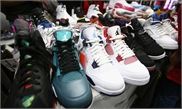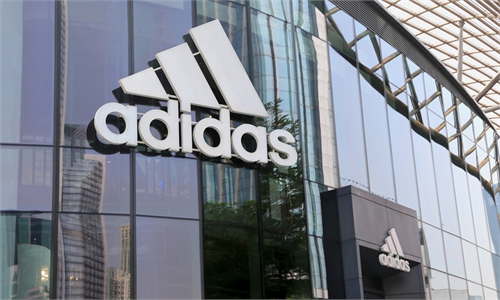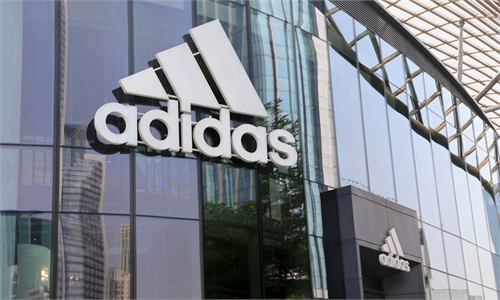Chinese sportswear brands report sweeping business performance in H1 of 2021
Patriotism, mature productions boost first-half revenue
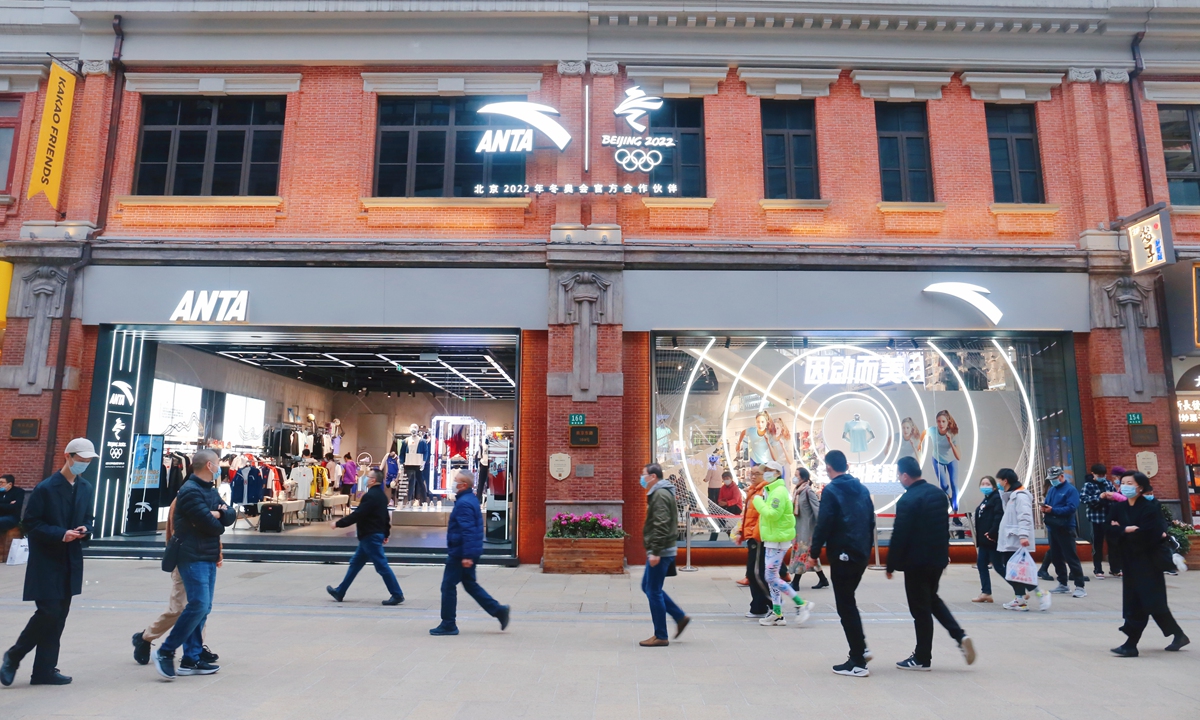
People pass by an Anta franchised store in East China's Shanghai Municipality on March 18. Photo: cnsphoto
Chinese sportswear companies reported business performance above expectations in the first half of this year, marking a turning point in China's highly competitive sportswear market where overseas brands like Nike and adidas have traditionally dominated.
Rising revenue for Chinese sportswear brand Anta Sports Products surpassed that of adidas earned in the Chinese market over the first half of the year.
Sweeping performance
Judging by the financial statistics released by key domestic sportswear brands, most of them have achieved a double-digit growth in revenue in the first half of 2021. Anta saw its revenue grow 55.5 percent on a yearly basis to 22.81 billion yuan ($3.54 billion), while Li-Ning registered growth of 65 percent to 10.20 billion yuan. Xtep also saw a surge of 12.4 percent to 4.14 billion yuan in the first six months of 2021.
Revenue aside, profit from several domestic sportswear companies also more than doubled during the period. Anta saw profits surge by 131.6 percent to 3.84 billion yuan, while Li-Ning's surged by 187 percent to 1.962 billion yuan.
In comparison to the eye-catching business rise of domestic brands, the performance of some overseas sportswear brands had turned the opposite direction. For example, adidas, a long-time force in China's sportswear market, saw its revenue slump by nearly 16 percent year-on-year in the country in the second quarter, according to media reports. The Chinese market is also the only global region that saw revenue slump for adidas in the second quarter.
This is a bit of surprise, considering that adidas has reported a 151 percent revenue growth in the Chinese market in the fiscal year of 2020, accounting for more than one fourth of its overall global income amid the coronavirus pandemic.
Chinese netizens hailed the development, with some saying they have been waiting a long time to see the rise of Chinese brands.
"I remember Anta has said it doesn't want to be China's Nike, but the world's Anta. I support domestic products," a Twitter-like Weibo user commented in late August.
A Beijing-based 24-year-old graduate surnamed Liu is now first and foremost an Anta fan. "I don't think the clothes of Nike and adidas are as comfortable as Anta's, even if they charge more money. Now Anta has good design capability as good as other foreign brands, so why not Anta?" Liu told the Global Times on Monday.
Analysts have attributed the change in the domestic sportswear landscape partly to Chinese consumers' patriotism, as they have shifted to Chinese brands after the crackdown on the Chinese textile industry by the Better Cotton Initiative, a non-governmental organization that has halted the use of cotton from Northwest China's Xinjiang Uygur Autonomous Region.
Adidas came under attack on Chinese social media in March over past comments the brand have made about Xinjiang cotton, while domestic brands like Li-Ning and Erke engaged in patriotic acts including donating to Central China's Henan during the recent floods.
It was surprised to see adidas' revenue drop in the second quarter in the Chinese market which is a lucrative one for years, Zhang Yi, CEO of iiMedia Research Institute, told the Global Times on Monday. By contrast, Chinese sportswear brands have won growing recognition over the recent two years, he said.
"A craze for Chinese brands leads a new type of consumption habits in the country, as some domestic brands are able to produce sportswear with the same quality in terms of crafting skills and design capability as foreign popular brands," Zhang said.
In addition, thanks to the country's mature e-commerce industry, business growth achieved by domestic brands on e-commerce platforms is the result of their smart positioning.
In the first half of this year for example, Anta's online revenues surged by 61 percent on a yearly basis, while Li-Ning's e-commerce revenue accounted for 29.1 percent of its overall revenue.
Data from e-commerce platform Tmall.com shows that sales of Anta products surpassed those of adidas and Nike from January to July, marking the first time a Chinese brand has led the market.
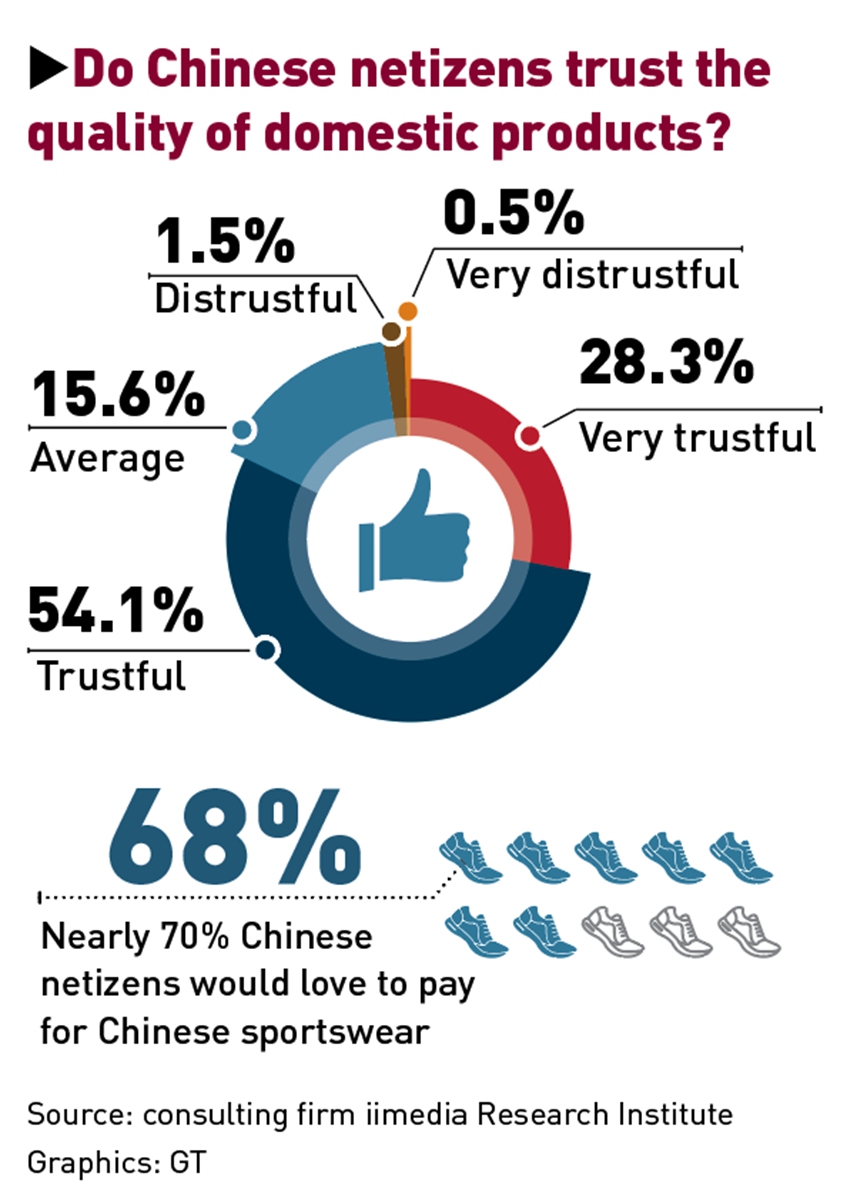
Long term gains
Some analysts also stressed that overseas sportswear brands like adidas still have an advantage when it comes to product design and promotion capabilities and therefore it's too early to know if they have lost the hearts of domestic consumers based on a short-term slump in their business performance.
"But in long run, home-made brands will gradually wrest dominance from overseas players in the Chinese market," Zhang predicted.
Foreign brands will for sure continue to reap benefits from the Chinese market which is still very open to foreign investment and enterprises, Zhang underscored, but what they have lost such as adidas in the second quarter gives Chinese brands more opportunities to grow fast and win new market share.
According to data from iiMedia Research, sales of Chinese homegrown brands were particularly strong in the first six months of 2021, with an annual growth rate of 41.6 percent.
More importantly, the expansion in sales was coupled with sharp growth in profitability, with an average annual profit growth rate of 65.3 percent for leading Chinese brands.
